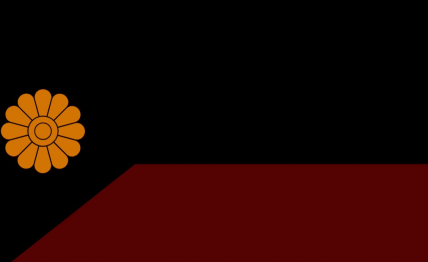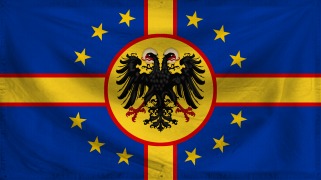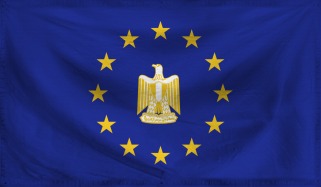Deblar wrote:could I reserve Korea?
Totally, I'll mark it down for you
Advertisement

![]() by The National Dominion of Hungary » Fri May 20, 2022 2:11 pm
by The National Dominion of Hungary » Fri May 20, 2022 2:11 pm

![]() by Arvenia » Fri May 20, 2022 2:27 pm
by Arvenia » Fri May 20, 2022 2:27 pm
Deblar wrote:could I reserve Korea?

![]() by The National Dominion of Hungary » Fri May 20, 2022 2:30 pm
by The National Dominion of Hungary » Fri May 20, 2022 2:30 pm

![]() by Neo-Western East Korea » Fri May 20, 2022 2:48 pm
by Neo-Western East Korea » Fri May 20, 2022 2:48 pm

![]() by Sao Nova Europa » Fri May 20, 2022 2:54 pm
by Sao Nova Europa » Fri May 20, 2022 2:54 pm
The National Dominion of Hungary wrote:Sao Nova Europa wrote:Could this be changed? I mean, could it be possible to alter history of Taiwan so it fits the concept I mentioned?
If not, is it possible to have a Greater Greece that encompasses Anatolia and Trebizond? I mean, in the past iteration other players were allowed to change their final borders.
Hmm I want two GEACPS Satellites for Japan so that'll stay as it is, I'll been keeping the history more set in this iteration.

![]() by Union Princes » Fri May 20, 2022 4:01 pm
by Union Princes » Fri May 20, 2022 4:01 pm

![]() by Mirum II » Fri May 20, 2022 4:22 pm
by Mirum II » Fri May 20, 2022 4:22 pm
|| IMPERIAL NEWS NETWORK | DATE: 4/10/1933 | WEATHER: Eleyta- 47°F, Sunny (12% Cloud Cover), Portmont- 52°F, Sunny (10% Cloud Cover), Stonegrove- 42°F, Rain (60% Cloud Cover) | NEWS: Nuclear Power- the future or science fantasy? Ministry of Energy says it's possible. | Imperial Parliament proposes new infrastructure legislation.| Blackacre sends warships through the Insel Island Channel, sparking outrage. ||

![]() by Sao Nova Europa » Fri May 20, 2022 4:36 pm
by Sao Nova Europa » Fri May 20, 2022 4:36 pm

![]() by The National Dominion of Hungary » Sat May 21, 2022 12:55 am
by The National Dominion of Hungary » Sat May 21, 2022 12:55 am
Neo-Western East Korea wrote:Would it be alright if I reserved an application for Honduras?
Sao Nova Europa wrote:
What about a greater Greece incorporating Anatolia and Trebizond?
Union Princes wrote:Hmmm, so the option is either Philippines or South africa
Mirum II wrote:snip

![]() by Republique Grande Francaise » Sat May 21, 2022 5:09 am
by Republique Grande Francaise » Sat May 21, 2022 5:09 am



![]() by Republique Grande Francaise » Sat May 21, 2022 5:10 am
by Republique Grande Francaise » Sat May 21, 2022 5:10 am

![]() by Mirum II » Sat May 21, 2022 5:28 am
by Mirum II » Sat May 21, 2022 5:28 am
The National Dominion of Hungary wrote:Mirum II wrote:snip
Looks great overall, just a few minor things.
A: We moved some dates, 2GW started in 1941 and the German Revolution in 1939.
B: We changed the map a bit, Germany is larger and managed to hold on to Bohemia and Königsberg, so you could up your population to some 115/120 million.
C: In light of the border change, I would change the demographic composition a bit. Some 70% German 20% Austrian, 5% Danish, 10% Slavic, 5% Other would make sense.
|| IMPERIAL NEWS NETWORK | DATE: 4/10/1933 | WEATHER: Eleyta- 47°F, Sunny (12% Cloud Cover), Portmont- 52°F, Sunny (10% Cloud Cover), Stonegrove- 42°F, Rain (60% Cloud Cover) | NEWS: Nuclear Power- the future or science fantasy? Ministry of Energy says it's possible. | Imperial Parliament proposes new infrastructure legislation.| Blackacre sends warships through the Insel Island Channel, sparking outrage. ||

![]() by Sao Nova Europa » Sat May 21, 2022 12:24 pm
by Sao Nova Europa » Sat May 21, 2022 12:24 pm
The National Dominion of Hungary wrote:That is a bit too big of a shift away from the established "canon". Should I put you down for Japan?

![]() by Union Princes » Sat May 21, 2022 12:28 pm
by Union Princes » Sat May 21, 2022 12:28 pm

![]() by Neo-Western East Korea » Sat May 21, 2022 1:15 pm
by Neo-Western East Korea » Sat May 21, 2022 1:15 pm

![]() by Hypron » Sat May 21, 2022 2:30 pm
by Hypron » Sat May 21, 2022 2:30 pm




![]() by The National Dominion of Hungary » Sat May 21, 2022 3:58 pm
by The National Dominion of Hungary » Sat May 21, 2022 3:58 pm
Republique Grande Francaise wrote:BIG BOI
Mirum II wrote:Edited!
Sao Nova Europa wrote:Sure, you can expect an app soon.
Neo-Western East Korea wrote:Snip
Hypron wrote:Tea and baguette

![]() by The National Dominion of Hungary » Sat May 21, 2022 4:04 pm
by The National Dominion of Hungary » Sat May 21, 2022 4:04 pm
Union Princes wrote:How did the Columbian decolonization of the Philippines go down?


![]() by Neo-Western East Korea » Sat May 21, 2022 4:49 pm
by Neo-Western East Korea » Sat May 21, 2022 4:49 pm
Good app in general. However, if you want to up the economy you absolutely can. With Columbia enforcing greater stability in the region and being heavily involved with all members of the GC, much of the unrest and instability in RL Central America wouldn´t have happened to such a great extent. If you still want to be shaky, I suppose the GC could have an odd man out in the family though.

![]() by Republique Grande Francaise » Sun May 22, 2022 12:23 am
by Republique Grande Francaise » Sun May 22, 2022 12:23 am
The National Dominion of Hungary wrote:Republique Grande Francaise wrote:BIG BOI
Whew gonna have to give that a second thorough read tomorrow when I´m back home.
Overall it looks good, I appreciate the detail. However I do need some things changed.
A: Population, China still implemented a population control policy, even if a milder one. And with it´s democratization would have achieved greater levels of wealth, education etc earlier. In light of this I have a hard time seeing a population much higher than 1.55 billion, 1.6 billion tops. And a corresponding adjustment for GDP in light of population adjustment.
B: UN doesn´t exist, the League of Nations does, no need to mention it in the app.
C: Those carriers, what classes are they?
D: Some mention of Sino-Soviet Economic entanglements as outlined in the regional description would be appreciated.

![]() by Chewion » Sun May 22, 2022 12:52 am
by Chewion » Sun May 22, 2022 12:52 am
Republique Grande Francaise wrote:The National Dominion of Hungary wrote:
Whew gonna have to give that a second thorough read tomorrow when I´m back home.
Overall it looks good, I appreciate the detail. However I do need some things changed.
A: Population, China still implemented a population control policy, even if a milder one. And with it´s democratization would have achieved greater levels of wealth, education etc earlier. In light of this I have a hard time seeing a population much higher than 1.55 billion, 1.6 billion tops. And a corresponding adjustment for GDP in light of population adjustment.
B: UN doesn´t exist, the League of Nations does, no need to mention it in the app.
C: Those carriers, what classes are they?
D: Some mention of Sino-Soviet Economic entanglements as outlined in the regional description would be appreciated.
I have edited my app! And yeah those carriers are Type 003 and Type 004.

![]() by Republique Grande Francaise » Sun May 22, 2022 1:17 am
by Republique Grande Francaise » Sun May 22, 2022 1:17 am

![]() by Arvenia » Sun May 22, 2022 2:38 am
by Arvenia » Sun May 22, 2022 2:38 am
The National Dominion of Hungary wrote:Union Princes wrote:How did the Columbian decolonization of the Philippines go down?
I could see it happening a bit later than in OTL with greater care and more negotiation. The UASC would have wanted a reliable ally in the region to keep an eye on Japan in case it resurged and the rising China, especially if it gained independence during the Vietnam War.
What do you say, Arvenia?

![]() by Great Britain and Galactic Commonwealth » Sun May 22, 2022 7:23 am
by Great Britain and Galactic Commonwealth » Sun May 22, 2022 7:23 am
Republique Grande Francaise wrote:The National Dominion of Hungary wrote:
Whew gonna have to give that a second thorough read tomorrow when I´m back home.
Overall it looks good, I appreciate the detail. However I do need some things changed.
A: Population, China still implemented a population control policy, even if a milder one. And with it´s democratization would have achieved greater levels of wealth, education etc earlier. In light of this I have a hard time seeing a population much higher than 1.55 billion, 1.6 billion tops. And a corresponding adjustment for GDP in light of population adjustment.
B: UN doesn´t exist, the League of Nations does, no need to mention it in the app.
C: Those carriers, what classes are they?
D: Some mention of Sino-Soviet Economic entanglements as outlined in the regional description would be appreciated.
I have edited my app! And yeah those carriers are Type 003 and Type 004.
Advertisement
Return to Portal to the Multiverse
Users browsing this forum: Arvenia, Newne Carriebean7, The Empire of Tau
Advertisement